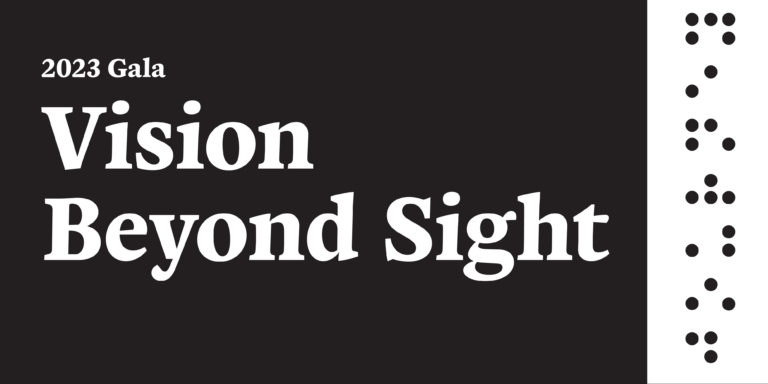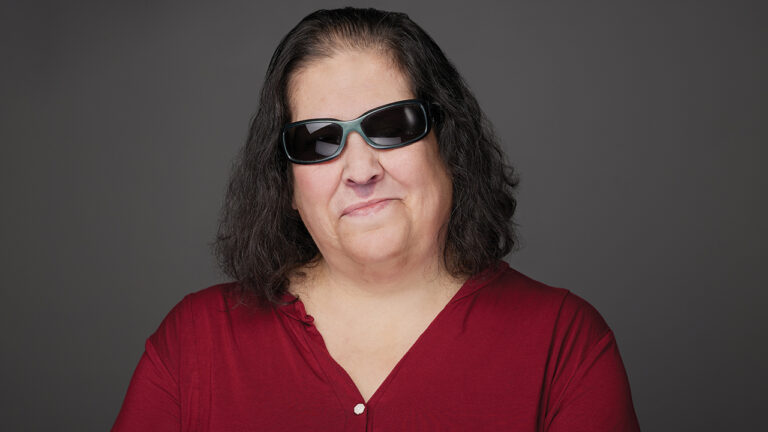Learning braille adds to your toolbox for navigating the world. Invented in 1824, by Louis Braille, this method allows you to take in information with your fingers. Assistive technology gets most of the attention these days, but braille still has its place. This applies to blind and visually impaired people of all ages – especially for those 50 and older. As has often been said, “you’re never too old to learn,” and this is absolutely true for braille.
It can be challenging to learn something new. However, you do not have to transition from no knowledge of braille to being completely proficient. Learn the basics or continue to increase your proficiency, it’s up to you.
Here are some things to consider.
Braille does not rely on technology
Technology has inherent limitations, CCTVs are stationary, smartphones need power, and handheld magnifiers are not always handy. All of these technologies have limitations that can render them useless. Your fingers do not rely on software, electricity, or good lighting. It is worth noting that medical conditions such as neuropathy, arthritis, or limited dexterity can pose some challenges for learning and using braille. However, these issues can be accommodated during the learning process by using larger dots and other means. If you have pain in your hands or limited sensitivity, braille may be limited to occasional spot reading. It is something you can use in certain situations when it is most appropriate. This is sometimes referred to as “survival braille”.
Real world braille benefits
Braille can be used in specific situations including finding the right button in an elevator or identifying office or apartment numbers. The benefits of braille are multiplied when combined with braille dots that can be attached to just about anything.
In the kitchen, braille dots can help you organize and quickly find items in your fridge, cabinets, or pantry. In your closet, you can sort and identify clothing, distinguish colors, or find that favorite necktie. In your bathroom, braille can help you find the correct prescription bottle, distinguish between shampoo and conditioner, and keep your hygiene and cleaning products organized. All of this can be done without having to look for a magnifier or some other device. This can often be a time waster and very frustrating. In these scenarios, using braille can be the fastest and most efficient way for reading for the blind.
Reading for the blind
Learning and using braille does not mean it will be your primary or only reading method. Assistive technology has its place too. CCTVs, screen readers, and other reading devices are sometimes the best and most appropriate option. Unless you choose to, you don’t have to start reading braille versions of books or magazines. You can still listen to audiobooks or use a reading for the blind service. The method you use depends on the activity, your comfort level and your preference. Think of braille as an addition to your bag of tricks. One that you can keep in your back pocket available to you anytime you choose or need to use it.
Resources for learning braille
At a minimum, it is worth considering learning braille and getting a basic introduction to it. Your state’s department of rehab services for the blind and visually impaired can be a great resource. These agencies can direct you to resources as well as provide training. Nebraska residents should contact the Nebraska Commission for the Blind and Visually Impaired. The local chapter of the National Federation of the Blind (NFB) or the American Council of the Blind (ACB) can also be a good place to start.
Similar to learning a new language, it helps to have some guidance and instruction. A rehab counselor or fellow member of an NFB/ACB chapter can help you get started with beginner level braille materials and other resources. They can also familiarize you with the many uses of braille, specific to your needs. Learning braille does not have to be a solitary pursuit. It can be very empowering, increase your sense of independence, and there is a good chance you may even enjoy it.
You might learn the basics and decide to stop there, or you may decide to advance further. The point is that braille is something you can learn and benefit from a great deal. As you adjust to living with diminished sight and are being introduced to the vast array of assistive technology, do yourself a favor and put braille on the list of things to consider because it makes reading for the blind possible.
If you’re in the process of learning braille or a new adapative technology and looking for like minded individuals, join one of our peer support groups. We look forward to meeting you!



